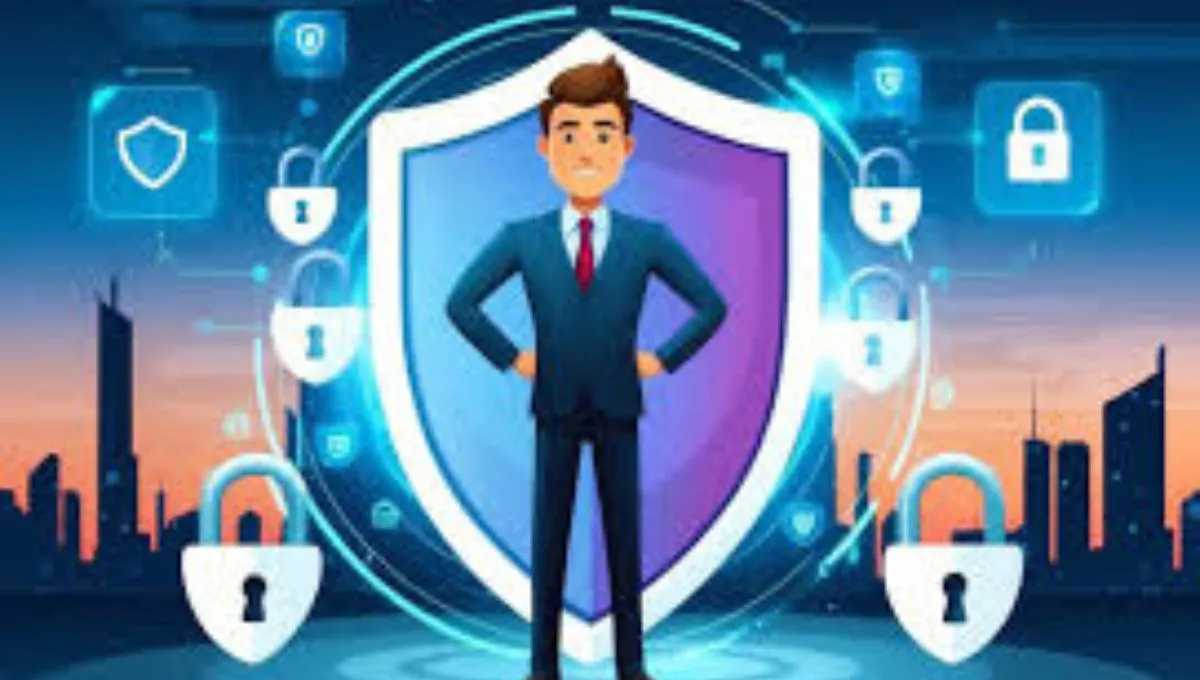Introduction
Why Cybersecurity Matters Now More Than Ever
However, you don’t have to be an expert in cybersecurity to Protect Your Business. You just need to keep in mind that over half of the hacks are caused by common mistakes.
It’s clear that cyber threats are a problem for all businesses now, not just huge corporations. No matter if you have a small fashion store or a startup company, hackers will be after your business. Cybercriminals continue to become more advanced with every passing year. They want more than just to change your website, as they also aim to steal your information, your customers and even your budget.
What’s New in 2025’s Cyber Threat Landscape?
The threat of AI-generated emails and copies of people’s faces is higher now than before. When you are targeted, ransomware can be very personalized. The number of threats in the cloud is going up rapidly. Equipment controlled by IoT, as well? They turn into opportunities if you don’t secure them.
Which steps should you take? Follow these 10 clear cybersecurity measures to Protect Your Business and ease your mind while sleeping.
1. Enable Multi-Factor Authentication (MFA)
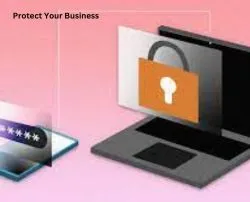
Why a Password Alone Isn’t Enough
Do you think 12 characters in a password make it safe? Think again. In seconds, hackers are able to use AI to get past passwords. Therefore, MFA, where a second way to verify your identity is used, should be used all the time.
If anyone steals your password, hackers won’t be able to access your account unless they use the second factor. You don’t have to be an expert in cybersecurity to Protect Your Business.
Tools to Easily Add MFA to Your Systems
You can easily install Google Authenticator, Authy and Microsoft Authenticator. Most well-known cloud services, Gmail, AWS and Office 365, are already equipped with MFA. Activate it as soon as possible to Protect Your Business from computer systems.
2. Keep Your Software and Systems Updated

The Risk of Ignoring Updates
Have you ever pressed “Remind Me Later” when you were offered a software update? At some point, each of us has done it. When delays happen, cyber attackers are given more time to take advantage of already-found weaknesses. However, you don’t have to be an expert in cybersecurity to Protect Your Business.
Automation Tools for Patch Management
You can make updates easy by using WSUS for Windows or ManageEngine Patch Manager Plus. Once you put your security settings in place, let them do their job and don’t worry anymore. Ensuring you always update everything is a straightforward way to Protect Your Business against risks.
3. Use a Virtual Private Network (VPN) for Remote Access
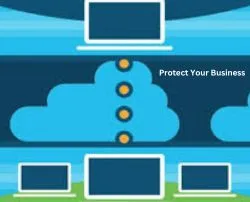
Securing a Hybrid or Remote Workforce
Even though remote work will not end, it introduces some problems. A hacker can have an easy time gaining access to your data through an unsecured Wi-Fi network at home. It is important to use a VPN because your traffic is encrypted and your location is hidden which is necessary for business systems.
How to Choose the Right VPN for Your Business
You should opt for a VPN created for businesses such as Nord Layer, Perimeter 81 or Cisco AnyConnect. Choose an app that is quick, user-friendly and doesn’t collect any information. You can Protect Your Business a lot with a modest amount of money spent on remotely.
4. Train Your Employees on Cyber Hygiene
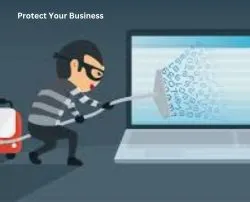
Your People Are Your First Line of Defence
Have you heard of people committing “CEO fraud”? They act like the boss and convince employees to send money away. It only takes one slip to put your business at risk for huge losses.
Simple, Fun Ways to Educate Your Staff
You can use services such as KnowBe4 or Curricula for exciting, interactive workshops. Makes things fun by giving a goody to the person who identifies the most phishing emails! When employees have education, it helps reduce threats to Protect Your Business.
5. Conduct Regular Security Audits

Spotting the Cracks Before Hackers Do
You should not treat cybersecurity as something that remains unchanged. As time progresses, new employees, new software systems and new risks show up. For this reason, businesses must perform regular audits.
In-House vs. Third-Party Audits
Small business? Begin by doing an auditing checklist on your own. Bigger company? Request a third-party professional to use penetration testing to check your security defences. Looking after that Protect Your Business regularly will help you it before any serious mistakes occur.
6. Implement Strong Access Controls

Not Everyone Needs Access to Everything
Considering all the trouble that could happen, imagine giving your intern control over payroll. Having a mission that is too complicated is hazardous. Filter access by which role a person has and what they are responsible for.
Role-Based Access Control (RBAC) Explained
RBAC works by giving access to only those who are authorized. Interact with Okta or Microsoft Azure AD to effortlessly make and manage these permissions. Strengthening access control separating teams Protect Your Business against mistakes made by employees.
7. Encrypt Your Data – Everywhere
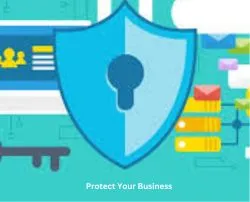
What Encryption Really Means
Your data is secured by encoding it with encryption so that an unauthorized person cannot read it. If encryption is not present, your data acts like a diary that anyone can read.
Tools and Tips for Encrypting Data in Transit and at Rest
Protect your website by using HTTPS, turn on BitLocker or a similar tool for Windows to encrypt your whole device and use Proton Mail or PGP to secure your emails. If you want to Protect Your Business to avoid security breaches and leaks, it should use data encryption.
8. Backup Your Data — And Test the Backups

Backups Are Useless If They Don’t Work
Ransomware attackers love to encrypt your files and demand payment. But if you’ve got recent backups, you can tell them to buzz off. Just make sure those backups actually work.
Attackers often encrypt important files which makes them inaccessible and tells victims to pay for the privilege to access them again. Decent backups will allow you to dismiss the threat or return to your previous save. Always confirm that those backups can be restored whenever needed.
Best Practices for Business Continuity
Keep 3 copies of your data in 2 types of storage and 1 should be kept offsite.
- Copies A, B and C.
- There are 2 different mediums for messages.
- One person can tackle the issue outside the project.
It also helps to conduct regular skill checks, so you find any issues early. Having backups enables you to quickly fix disaster and avoid major data loss to Protect Your Business.
9. Monitor Network Traffic in Real Time
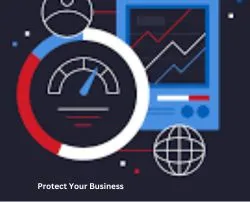
Spotting Intrusions as They Happen
It would be wonderful to know when a break-in is happening as it takes place. That is the main role of network monitoring for cybersecurity. You’ll recognize suspicious actions and be able to deal with them promptly.
Affordable Tools for Small Businesses
Don’t have a big budget? Some of the best open-source solutions include Zeek, Security Onion and Snort. You might also want to choose premium options such as SolarWinds or Datadog. Being able to monitor live events on the network helps you to Protect Your Business from dangers as they occur.
10. Have an Incident Response Plan Ready
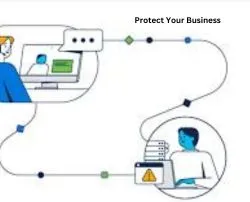
When the Worst Happens — Be Ready
Be optimistic and also prepare for bad outcomes. Sixteen thousand companies, even highly secure ones, have experienced data breaches. With a plan, you’ll cope quicker, in a smarter way and cause less damage.
Steps to Build a Practical Response Plan
- You need to know who is included on the response team.
- Regulate what events should be recognized as security incidents
- Create a list of what to do to prepare.
- Provide instructions on telling stakeholders about the findings.
- Have at least two emergencies drilled a year
Having a good plan to manage incidents can prevent a disaster. Make sure you don’t neglect it if you really want to Protect Your Business in the coming years.
Conclusion
Being safe online is a must in 2025 because it’s necessary to protect your business. The danger comes from sophisticated AI tricks as well as dangerous ransomware. However, the positive outcome is that With these steps in mind, Protect Your Business from hackers.
First, practice one solution such as adding MFA or conducting a rehearsal of backups and then keep moving forward. Getting better is more important than being perfect. To stay safe, you should be on the lookout, well-informed and well-prepared.
Head out and nail those opportunities!
FAQs
1. What’s the biggest cybersecurity threat to small businesses in 2025?
Phishing with AI-made content and ransomware is a major danger, mainly for businesses whose staff is not trained and do not use MFA.
2. Is it expensive to implement all these cybersecurity tips?
Not necessarily! Plenty of tools are available for free or at a very low price. Start off with the basic measures such as MFA, backups and training and then go on to develop further controls.
3. How often should my business update its cybersecurity policy?
At the very least, address security once a year or after any big change happens (such as working remotely or using a new system).
4. What’s a simple first step to protect my business today?
Make sure you have MFA set up for every one of your accounts. It’s easy for anyone to do, it’s fast and it’s highly effective.
5. Do I need a cybersecurity expert on my team?
Not always. Small businesses have the option to hire MSPs for security or turn to technology solutions that work automatically.

